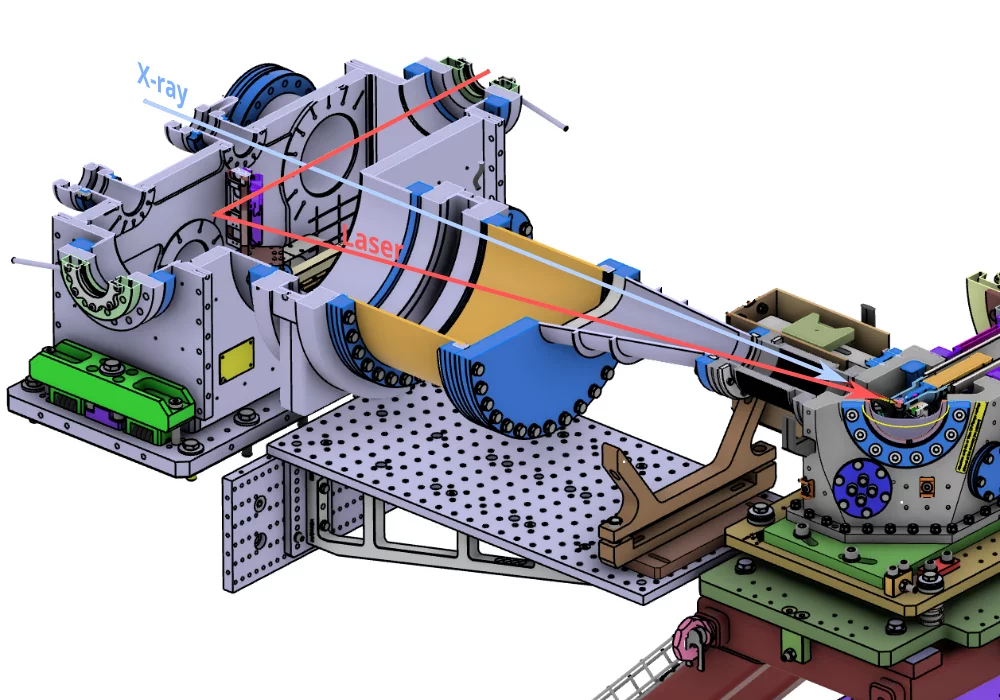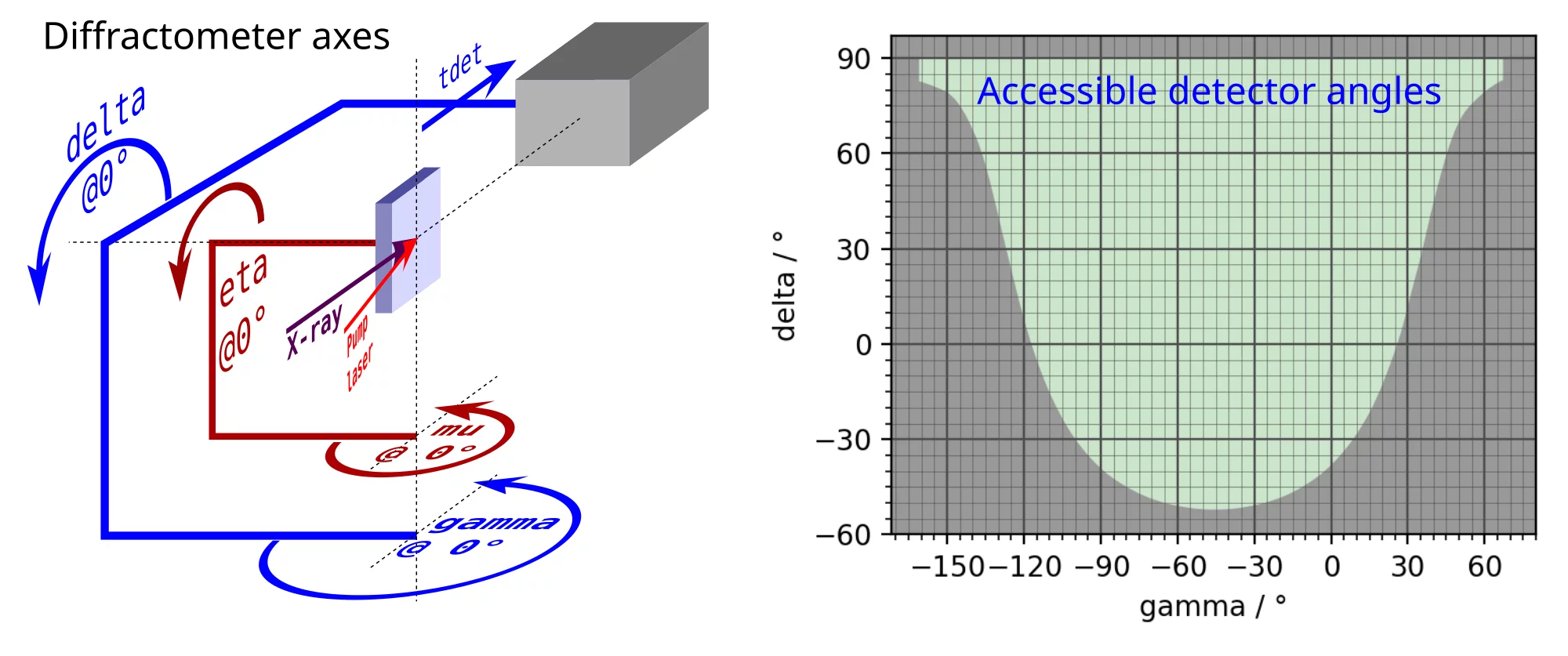The grazing incidence cryo vacuum chamber (GIC) is optimized for high stability grazing incidence diffraction at sample temperatures between 8 and 500 K using a Helium flow cryostat. It features a large diffraction angular range a Beryllium dome exit window. The compact sample survey and positioning setup features two non-collinear microscopic view directions and a interferometric position sensor, which can be used to stabilize the sample surface during measurements and cooling/heating gradients to sub-micrometer precision with respect the FEL beam. Typical FEL x-ray spot sizes range from 2 to 10 µm in horizontal direction, normal to the sample surface, and can be varied from 2 to 500 µm in vertical direction.
The chamber is optimized for the XRD base platform, providing a 2 circle detector arm equipped with a variable distance large area detector, as well as with a collimation flight tube area detector which can be optionally replaced by a polarization analyzer. Additional compatibility with the GPS platform provides access to the heavy load single detector circle (e.g. equipped with the Bernina RIXS analyzer). The GIC can further be combined with the Robotarm-mounted 16MP Jungfrau detector for simultaneous large solid angle measurements at good resolution for e.g. sample systems in powder diffraction geometry.
Laser pulses can be directed to the x-ray probed sample at incidence angles from 0 to 12 degrees with respect to the sample surface, facilitated by a tilted arrangement of the Beryllium dome. The flow cryostat cooling and sample motion range limits accessible x-ray incidence angular range.
The following table summarized parameters important for experiment planning. We encourage to additionally contact the Bernina staff for feasibility questions, especially at the limits or beyond the given parameter ranges.
| FEL x-ray photon energy | 5–13 keV |
| Pump laser wavelength | 240 nm – 2.5 µm |
| Temperature range | 7.5 K – 300 K |
| Laser to x-ray pointing angle | 0° – 12° |
| X-ray incidence angle | -1°–5° ( ~10-4° res.) range may be manually increased by up to + 8° |
| xhex/yhex translation | ±8 mm (100 nm res.) |
| zhex translation (stabilized by interferometric measurement with <20nm res.) | -13–20 mm (100 nm res.) |
| Sample tilt (rxhex/ryhex) | ±1.5° |
| η / eta rotation | ±190 ° |
The GIC resembles a surface diffractometer with 2 sample rotations and 2 detector rotations. The convention of angle names and directions is compatible to calculations using the "You" 6-circle diffractometer convention (deactivating 2 axes as chi=180° and phi=0°). The compact arrangement in a Beryllium dome provides a large accessible range of diffraction angles (Figure above right) e.g. pure in-plane diffraction up to 120° (gamma=0°, delta=120°).




